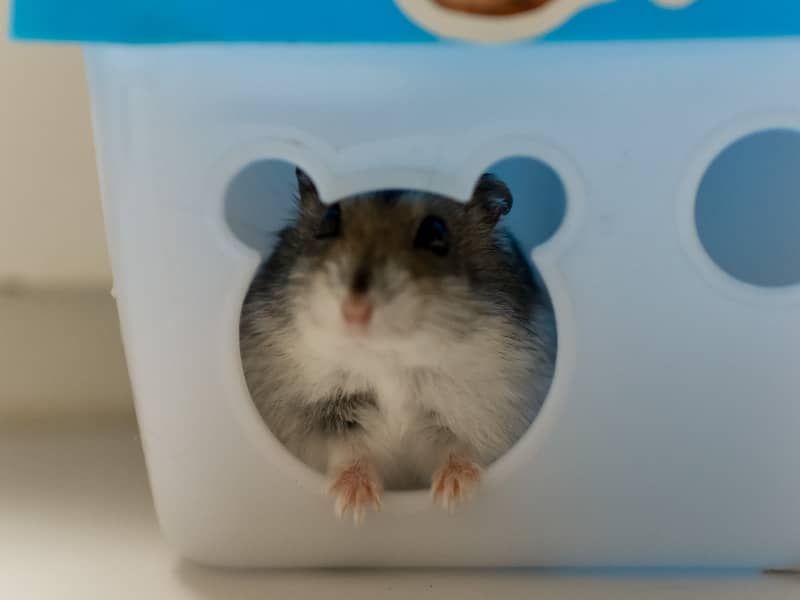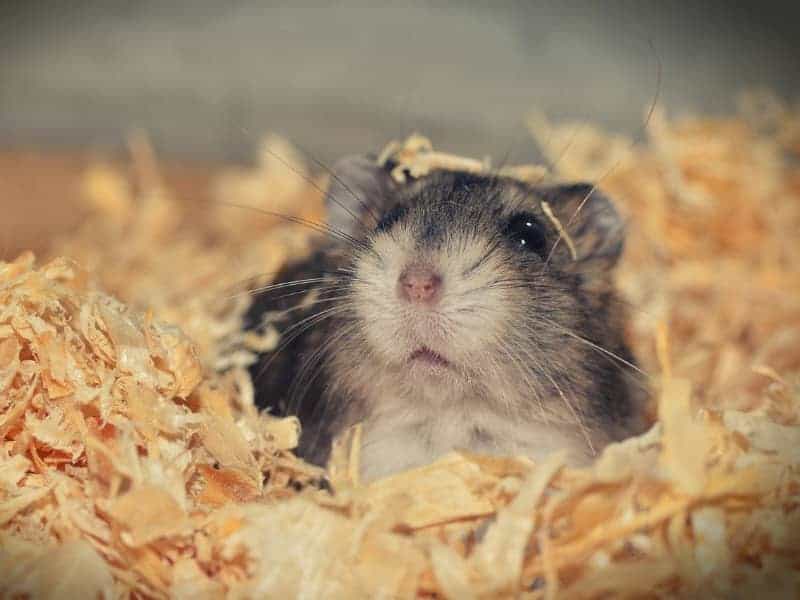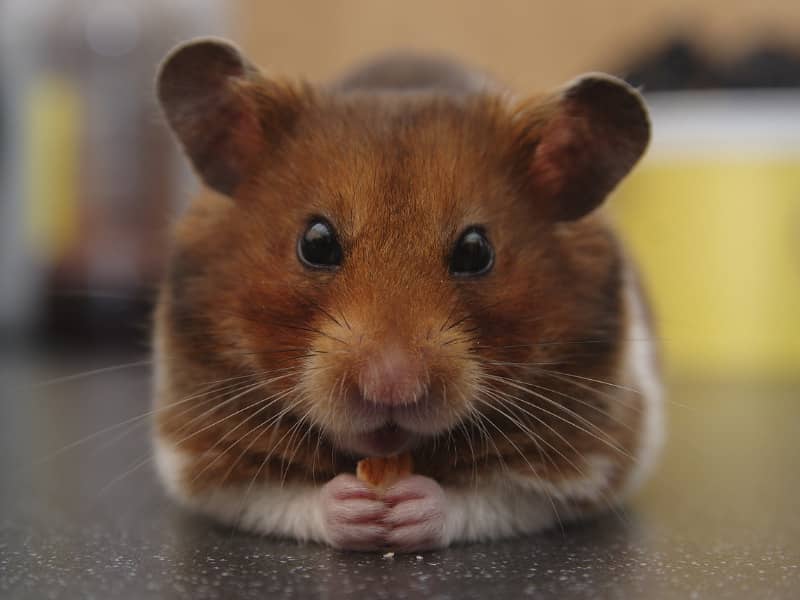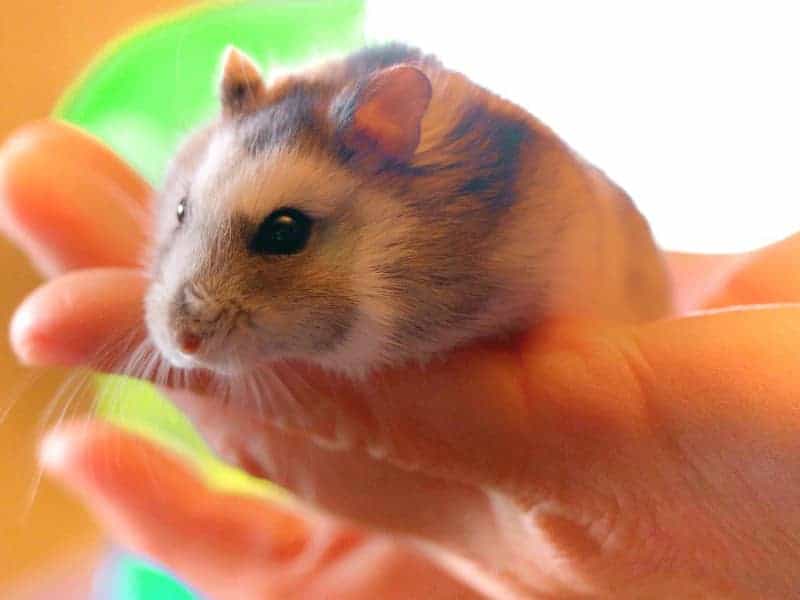
Hamster transport box
A hamster transport box is not only a practical accessory, but often an indispensable part of a hamster owner's life. It serves as a safe accommodation for the small rodent in various situations. Now we will go into the individual aspects in which a transport box can be particularly helpful.
Hamster transport box applications
Imagine an emergency happens in your home. Maybe a burst water pipe or a power outage. In these situations, it's crucial that you can get your hamster to another location quickly and safely. A well-designed hamster transport box is worth its weight in gold in these cases.
It should be easily accessible and always at hand so as not to waste time in an emergency. In the hustle and bustle of the moment, improvised solutions such as a shoebox or a bag might be too risky. These offer neither sufficient protection nor the necessary ventilation for your little friend.
In addition, it is useful to equip the box with some essential things. These include a bit of food, some nesting material and maybe even a small water bottle. This way you can make sure that your hamster will survive the transport as stress-free as possible.
Vet visits
Going to the vet is a stressful situation for many pets, and hamsters are no exception. A transport box offers the advantage here that it creates a familiar environment and can thus minimize the stress for the hamster.
It is important that the box is easy to open, but not so easy that the hamster could open it from the inside. The material should be sturdy to withstand the vet visit without damage, but at the same time light enough to facilitate transport. Make sure the box is well ventilated and has no sharp edges or corners that the hamster could injure itself on.
It is also recommended to put some nesting material from the hamster's cage into the transport box before the vet visit. The familiar scent can help the hamster get used to the new environment faster and reduce the stress of the visit.
Choosing the right hamster transport box
Choosing the right hamster transport box is an important decision. After all, it's about the well-being of your little pet. In this section you will learn which aspects you should consider when choosing the right box.
Materials and their advantages and disadvantages
Choosing the right material for a hamster transport box is a crucial factor. Different materials each have their own advantages and disadvantages. Plastic is lightweight and easy to clean, but can be problematic if ventilation is poor.
Metal is sturdier, but also heavier and less comfortable for the hamster. Wood provides a more natural environment, but is difficult to clean and can absorb moisture, which can lead to mold.
Most transport boxes are made of a combination of plastic and metal. The plastic bottom is easy to clean, while the metal grid on top provides adequate ventilation. This generally provides a good balance between safety and comfort.
Size and shape of the hamster transport box
The size of the hamster transport box should of course be adapted to the hamster. Too small and the hamster will feel cramped, which can cause stress. Too large and the hamster could be tossed around during transport, which is also stressful and potentially dangerous.
The shape of the box is also important. It should have a large enough opening to easily put the hamster in and out. In addition, the box should have a flat bottom so that the hamster does not slide during transport. Some boxes also have built-in compartments for food and water, which can be very convenient.
Ventilation and fields of vision
Adequate ventilation is critical to your hamster's comfort and health during transport. Make sure the box has enough ventilation openings. However, these should be designed so that the hamster cannot climb out or injure itself.
Fields of vision are also an interesting aspect. Some hamsters like to be able to observe their surroundings, while others may feel stressed by this. Depending on how well you know your hamster, you could choose a box with more or less viewing areas.
Safety and comfort during transport
Once you have chosen the right hamster transport box, the next step is to make sure that the transport is as comfortable and safe as possible for your little friend. Here are some tips on how you can achieve that.
Inserting nesting material into the hamster transport box
Adding nesting material to the transport box can give the hamster a sense of security. A bit of the material he already knows from his cage can work wonders.
The familiar smell can help the hamster get used to the new environment faster. For example, you could put some hay or paper from his cage into the transport box.
Make sure the material is clean and dry. Dirty or damp nesting material could not only increase stress for the hamster, but also pose health risks.
Food and water
During transport, it is important that the hamster has access to food and water. A small piece of fresh fruit or vegetable can serve as a water source. However, be careful when choosing food; it should not be something that spoils quickly or could bloat the hamster.
Some transport boxes have special compartments for food and water. If this is the case with your box, fill them carefully and make sure they cannot tip over during transport.
Avoiding stress factors
Stress is one of the main enemies for hamsters, especially during transport. Loud noises, jerky movements or sudden temperature changes should be avoided.
While driving, place the box in a safe place where it cannot tip or fall. Avoid setting the air conditioning or heating too high and keep the radio or other noise sources at a moderate volume.
Tips for accustoming the hamster to the transport box
It is not enough to just have a good hamster transport box; your hamster should also be comfortable in it. Getting your hamster used to the box is an important step in minimizing stress and discomfort during transport. Here are some tips that can help you with this.
Hamster transport box training
Getting the hamster used to his transport box should be done gradually and with a lot of patience. Start by placing the box near the hamster's cage so he can sniff and explore it.
After a few days, you can try putting the hamster in the box for short periods of time. Gradually increase these periods until he is visibly comfortable in it. This gradual introduction helps the hamster to perceive the box as a safe place and not as a threat.
The goal is that the hamster sees the box as a kind of "second home". This makes later transports much less stressful for both sides.
Reward systems
Positive reinforcement can be a valuable tool in getting your hamster used to his carrier. Use small treats to show him that it is worth going into the box.
You could put something like a piece of his favorite vegetable in the box. If he eats it, you know he is at least comfortable enough in the box to eat. But be careful not to overfeed him or use treats that might stress his digestive system.
Avoid common mistakes
When accustoming the hamster to the transport box, some mistakes can be made that could make the process more difficult or even dangerous. One of the most common mistakes is forcing the hamster to go into the box. This can cause stress and a negative association with the box.
Another mistake is to put the hamster in the box immediately after buying it and drive off. This can be very stressful for the hamster, as it has not had time to get used to the new environment.

Care and cleaning of the hamster transport box
Regular care and cleaning of the hamster transport box is important not only for hygienic reasons, but also for the well-being of your hamster. A clean box will help your little friend feel more comfortable during transport. Let's take a closer look at the most important aspects of care and cleaning.
Regular cleaning
Regular cleaning of the hamster transport box is essential. Depending on the material and frequency of use, the interval may vary. As a rule, however, you should clean the box thoroughly after each use.
Use warm water and a mild soap for cleaning. Be sure to reach all corners and edges where dirt and bacteria can collect. After cleaning, the box should be rinsed well and dried completely to prevent the formation of mold and bacteria.
Disinfection
In addition to regular cleaning, it is also advisable to disinfect the transport box occasionally. This is especially important if your hamster has been sick or if the box has not been used for a long time.
For disinfection, you can use special pet disinfectants available at pet stores. These are usually safe for pets and effective against a wide range of bacteria and viruses. Be sure to use the disinfectants according to the instructions on the package.
Storage
Proper storage of the hamster transport box is an often overlooked aspect, but it is important for the longevity and hygiene of the box. After cleaning and disinfection, the box should be stored in a dry, well-ventilated place.
Avoid storing the box in damp or dirty areas as this can promote the growth of mold and bacteria. If the box is foldable, you can fold it for space-saving storage. In any case, the box should be checked again before the next use and cleaned or disinfected if necessary.
Hamster Transport Box - Frequently Asked Questions
A hamster transport box can raise a lot of questions, especially if you are new to hamsters. In this FAQ section, we address some of the most frequently asked questions.
Can you use a normal box as a transport box?
It is possible, but not recommended. Normal boxes are often not sufficiently ventilated and cannot provide the hamster with the necessary protection. In addition, they often lack the special facilities such as compartments for food and water that a specially designed hamster transport box can provide.
What is the maximum time the hamster should be in the box?
The amount of time a hamster can spend in the transport box depends on various factors such as ventilation, temperature and stress level of the hamster. In general, however, the stay should be kept as short as possible. For short trips to the vet or in emergencies, the box is sufficient. For longer trips, you should take regular breaks.
What to do if the hamster shows restlessness in the box?
If your hamster is showing signs of stress or restlessness, it is important to quickly identify and correct the cause. Check ventilation, temperature, and whether food and water are available. In some cases, placing a familiar piece of nesting material or a treat in the box may help calm the hamster.
Do I need a separate transport box for each hamster?
Most experts recommend using a separate transport box for each hamster. This minimizes the risk of disputes and stress, especially in an already stressful situation like a transport.
Is it safe to place the transport box in the car on the passenger seat?
It is better to place the transport box on the floor behind the passenger seat to minimize the risk of tipping over or falling down. If this is not possible, make sure that the box is firmly fixed on the passenger seat.
Can I use the transport box for other small animals?
Although some transport boxes are versatile enough to be used for different types of small animals, it is best to use a box designed specifically for hamsters. This will ensure that it meets the specific needs and behaviors of hamsters.
Does the hamster transport box have to be leak proof?
A leak-proof transport box is recommended, especially if you plan to transport your hamster in it for a longer period of time. This prevents urine or water from leaking out of the box and contaminating the hamster or the environment.
How often should I clean the transport box if I use it regularly?
If used regularly, the transport box should be thoroughly cleaned and disinfected after each use to minimize the risk of bacterial or fungal infection.
Author

-
Garden animal - A life with nature
Welcome to my animal blog! My name is Dirk and I am happy to take you on my journey through the fascinating world of animals and gardening.
Born 54 years ago, I have had an insatiable curiosity for the animal world around me since childhood. Although I have moved professionally in other industries, my true passion has always been animals and nature. It is remarkable how a small garden has become such an important part of my life.
Many of my fondest memories are associated with the animals that share our home. Whether it's the curious squirrels that scurry across the trees in the morning, the colorful variety of birds that visit our feeders, or the busy bees and butterflies that pollinate our flowers, every moment with them is invaluable to me.
This blog is my contribution to share my experiences, discoveries and insights with like-minded people. Here I will share stories of unforgettable encounters with animals, give tips on gardening and creating wildlife-friendly habitats, and take you on my journeys through nature.
Thank you so much for being here!
Cordial,
Dirk aka garden animal
Last posts
- 27. February 2024PetsVeganes Hundefutter – Grün und Gesund?
- 18. January 2024ChickensOregano für Hühner
- November 27, 2023HamsterDiurnal hamsters
- November 24, 2023HamsterHamster hammock






